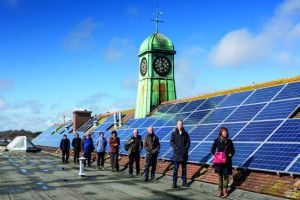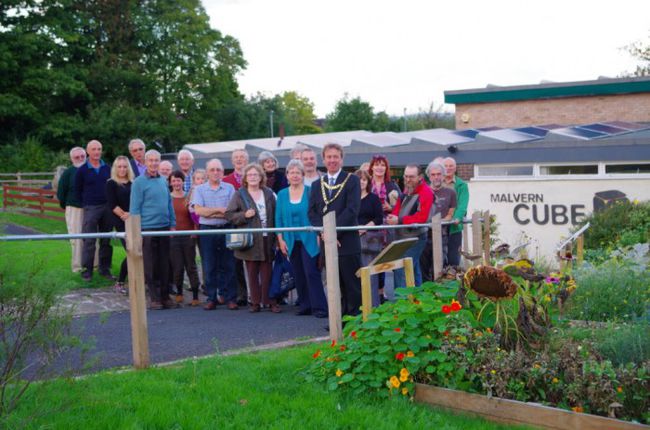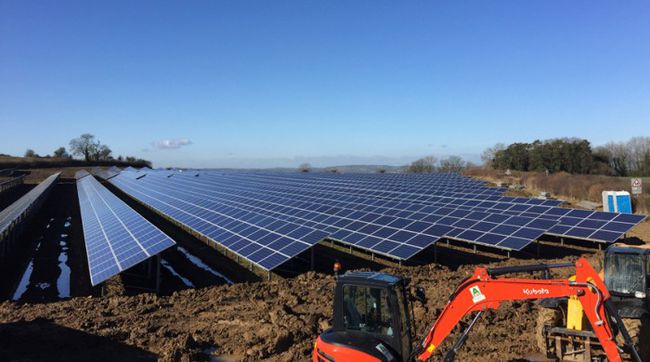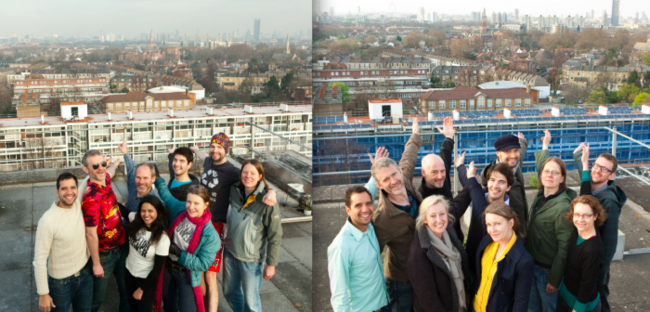11 Sep 2015
Opinion: Community energy is too good an opportunity to miss.

While government can famously tend to be siloed, each department working in isolation from each other, at the community scale, that’s not a problem we face. Making communities more resilient is all about joining things up, making connections. As a result, we look at energy generation in a very different way to Energy Secretary Amber Rudd, for whom community energy is just a matter of generating kilowatts. Long forgotten are these words from her department’s 2014 Community Energy Strategy:
“Community-led action can produce energy, reduce energy use, manage energy demand and purchase energy. It can often tackle challenges more effectively than government alone, developing solutions to meet local needs, and involving local people. Putting communities in control of the energy they use can have wider benefits such as building stronger communities, creating local jobs, improving health and supporting local economic growth”.
There are around 5,000 community energy groups across the UK, and as well as generating what Howard Johns, author of the forthcoming book Energy Revolution calls the potential for “the wholescale transformation of the energy system”, they generate much more besides. They bring people together, create community, a sense of shared purpose, a sense of civic pride. They can create funding streams for a range of community projects that otherwise struggle for funding. Repowering London’s Energy Garden is a beautiful example of this, using solar energy to unlock new food gardens on 50 London Overground stations.
Community energy projects allow people to feel more control over what happens in their community. They create valuable partnerships of community organisations. People are able to invest in something they believe in, and they can see the world changing around them.
Community energy can also generate public health benefits. For every community-funded solar installation that Brixton Energy put in place, they also fund energy efficiency measures in the building hosting the panels, reducing fuel poverty. The World Health Organisation identify energy generation as one element of a ‘climate-friendly hospital’, the perfect way for communities to come together with local healthcare providers. Brighton & Hove Energy Services Co-operative Ltd have done amazing work in the poorest wards in Brighton working with people in fuel poverty. Getting people talking, feeling listened to, feeling part of something, all have tangible public health benefits.
According to Peter Capener of Bath & West Community Energy Co-operative, who have raised around £10 million in investment, mostly from local people, community energy “creates the conditions within which change can flourish, scale and be embedded across society”. Looking into the stories of many community energy groups, one gets a very real sense of the deeper shift from despair about the future to hope that they generate.
But that all now looks set to be discarded, tossed into the same waste paper basket in which the Community Energy Strategy now moulders. Rudd recently announced a review that looks set to lead to changes that could very well result in the end of community energy schemes as we know them. Having previously being quoted as saying “I want to unleash a new solar revolution”, subsidies for solar energy look likely to be slashed by up to 87% because, the thinking goes, the subsidies drive up energy bills, and so therefore need cutting. But in fact, subsidies to solar energy are tiny, only costing the average energy bill payer around £10 a year out of an average bill of £1,338. I should also mention here that, according to Oil Change International and the Overseas Development Institute, the UK government subsidise oil and gas exploration to the tune of £1.2 billion a year. And that’s in the wider context of global spending of £5.3 trillion subsidising fossil fuels, more than is spent by governments globally on healthcare.
According to Juliet Davenport, founder and CEO of Good Energy, who support many community energy projects, if Rudd’s proposals are adopted, “I think we will see a lot of these community energy projects go away, and a lot of the creativity that we’ve seen around renewables being able to be an engine for communities disappear, and that will be a real shame”. It’s more than just a shame though. It is a missed opportunity of historic proportions. Rather than the one-off payment of £100,000 the government are promising for every well fracked near on our doorsteps, the benefits of investment in community energy, generated year after year, create a self-perpetuating virtuous circle that can spin off in multiple, unimaginable and unpredictable directions.
Failing to recognise that the community energy sector is distinctly different from the commercial sector represents a spectacular failure of the imagination. Community energy is already demonstrating its potential to unlock community engagement, community investment and local economic regeneration in a dynamic way. It’s the golden thread that can run through community food projects, reskilling initiatives, local enterprise creation, public health, and so much more. If it really can’t be funded from energy bills, suggests Davenport, perhaps community energy should be supported from other budgets. For example, community renewables could be funded through local economic regeneration funding, through funds for enterprise creation, or even through public health budgets.
While this government has given communities the Right to Bid, the Right to Buy and the Right to Build, they are about to take away their Right to Generate. While it is motivated by concerns about the impacts on bill payers, the government appears to be missing the crucial point that the impacts of climate change will be far worse than £10 a year on energy bills. Indeed, in the context of community energy, £10 a week for the kinds of benefits it can bring about starts to look like a bargain.
Chris Rowland of Ouse Valley Energy Services Company in Lewes, told me of a government-funded peer-mentoring scheme it ran for 10 neighbouring communities. One, Hassocks, Hurstpierpoint, Keymer and Ditchling Transition, started ‘HKD Energy’. They installed 307 solar panels on a local school funded by £100,500 in shares from local people, with 83% of the investors living within a 4 mile radius of the school. Filled with confidence and enthusiasm, and the sheer buzz that comes from enabling your community to do something so remarkable, they were actively looking for new sites, new buildings, for future projects. Now, like thousands of other community groups, that passion, that commitment, that spirit, risks being brushed aside, all that dynamism dissipated.
Community energy will no doubt adapt, find different models, continue to be creative and inventive. But this is an entirely unnecessary body blow. In December, David Cameron heads to COP21 in Paris, credibility in tatters. Yet applying some creativity and a healthy dose of silo-busting, this government might see that community energy offers a remarkable opportunity to deliver much of what it wants to see: entrepreneurship; local empowerment; economic self-reliance; public health; training, apprenticeships and much more. Community energy represents an opportunity too good to miss. I’ll leave the last word to Brixton Energy’s Agamemnon Otero, who once told me:
“We’re not wedded to solar panels, or Combined Heat and Power, or whatever. We’re wedded to wellbeing. The only way people actually ever believe in themselves and get involved is when they’re allowed to be involved. As soon as you take responsibility for something and you give and you take back and you give and you take back, you develop self will and self belief, and that’s what’s been taken away from people. Again and again I see that the best way to get people involved is to allow them to take back part of their own autonomy. It’s like you distil a sourdough culture into the people and then they rise! Power to for and by the people”.
What can you do about this? You could write to your MP, sign the 38 Degrees petition, or share your thoughts, and make some of the above points, at DECC’s Feed-In Tarriff review consultation page, or sign their petition, where 100,000 signatories triggers a government response.
Rob Hopkins


